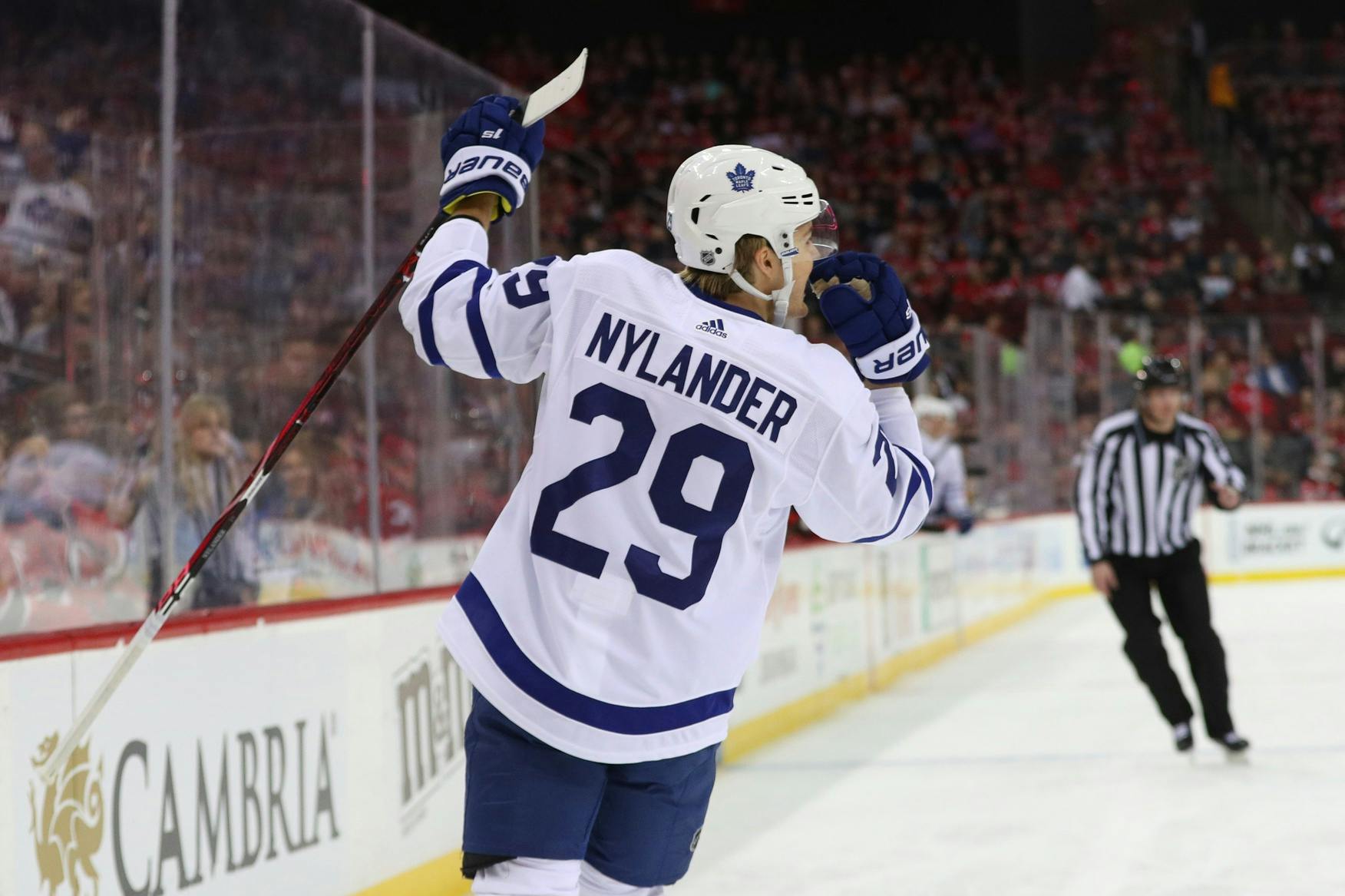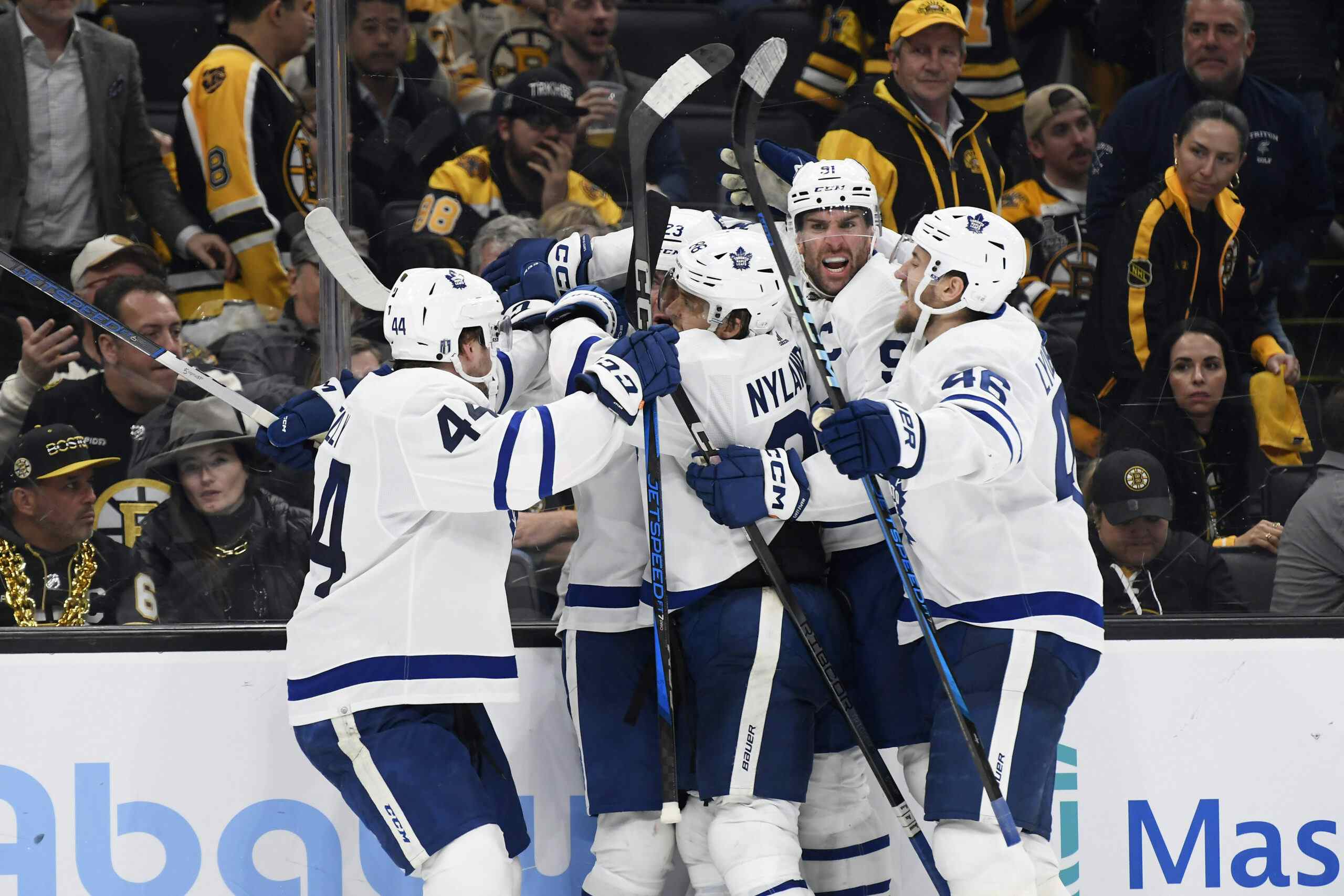It’s time for William Nylander to silence his critics

When you look back on this season, you’ll remember a lot of things, both good and bad.
You’ll recall the meaningful wins against Montreal. The mostly meaningless loss against Montreal. The trips to Long Island. The many nights where the Leafs dominated a team and just put up goal after goal after goal. The emergence of Mitch Marner as a truly elite NHL top-line winger (although some will tell you otherwise!). The highs and lows of Garret Sparks. Andreas Johnsson doing things! ENDLESS discussion about offer sheets. Three losses to those Ottawa Senators?
And of course, you’ll recall the story of the man (boy?) who didn’t cave. Over and over again from July until the first day of December, William Nylander and his contract dispute was front page news of seemingly every publication in the country. Cross-Atlantic trips for Kyle Dubas happened on at least one occasion, and the constant thought of “hey, he’ll be in the lineup this week” slowly shifted to “will he be in the lineup… ever again?”
Flash back to December 1, 2018. 4:57 p.m. Eastern time. News breaks three minutes before the 5 p.m. Nylander is back.
Five days later, he’s in the lineup. Will he score on his first shift? Will he come out with a vengeance and light up the league? Will he be reunited with Auston Matthews? Played on the first power play unit?
Well, we all know now it wasn’t exactly the prettiest stretch to get things going. It took Nylander until game 12 (against Minnesota) of his season to score the first goal, and he picked up just three points in his first 19 games. And oh boy, could you hear the armchair general managers having their voices amplified every night.
It was an easy dig to look at Nylander’s cap hit of $10,277,778, which was the sixth highest in the NHL this season, and fifth if you exclude goalie Carey Price’s megadeal in Montreal. Ahead of Nylander, you’ve got the two three-time Cup winning forwards in Chicago, his own teammate in John Tavares, and generational talent Connor McDavid. That’s it. That’s the whole list.
Simply put, Nylander was being paid like a superstar and performing (at least on the scoresheet) like, well, like someone who hadn’t played professional hockey in a while. But we do have to put things into context.
For starters, it’s of course a very unique deal, which goes without saying if you read the details of the contract.
Nylander’s deal didn’t prevent the Leafs from signing John Tavares, or from acquiring Jake Muzzin, or from signing Auston Matthews to five more seasons, or anything else like that. Nylander projects as likely the Leafs’ fourth-most important forward moving ahead, in whatever order you’d like to place Auston Matthews, Mitch Marner and John Tavares. So far, they’ve got three of those signed.
Nylander’s deal came in a season where the Leafs were still full of RFA contracts and had the cap space to pull something off funky. The money he’s making this season (and costing the Leafs) doesn’t really matter in the terms of building the Leafs up right now. And we could talk endlessly about cap comparables and what not, but even the lowest reliable projections had Nylander making at least $6.5 million per season. At the end of the day, it’s a case of less than $500k per year we’re arguing over, which is something to an average joe like you and I, but not even the difference of the cost of a league minimum roster player. The Leafs certainly have a cap crunch moving forward, but coming out of his ELC, William Nylander and his camp negotiated a deal that didn’t stray too far from what we expected initially.
And while he wasn’t producing points, Nylander was still on the ice for a ton of offence: shots just weren’t finding their way in. In that 12-game stretch to start the year including his first goal, Nylander was on the ice for 74.23 shot attempts by the Leafs/ 60 minutes (at 5v5). The league leader this season in on-ice corsi for/60 (CF60) among forwards was… Brendan Gallagher, who was ahead of, his linemate Tomas Tatar, and uh, William Nylander. Nylander regularly carried one of the league’s best transition games into offensive zone opportunities for himself and his teammates, but the puck really just didn’t find itself in the net very often in the early going.
But the takes, oh they began. Nylander’s too lazy. Too greedy. Too much of a puck hog. Doesn’t want the puck hard. Trying too hard. Not trying hard enough. Puts himself above the team. And on and on and on and on, and you’ve seen them already so let’s move on. Maybe you’re one of his critics. I’m not trying to convince you not to be. Every loss seemed to bring out at least one “were the Leafs better without him?” take.
If you take a look at Nylander’s game log, you can see a noticeable increase in point production beginning around January 20th, where he picked up an assist in a loss against Arizona.
From that night to the rest of the season, you’ve got this scoreline:

Over that same stretch, Nylander finished fifth amongst Leafs forwards in 5v5 points per 60 minutes, above even Auston Matthews. His number of 2.31 points/60 would be higher than his first full season in the NHL, and only slightly lower than last season’s mark, 2.38. He was, essentially, just about the same player he’s been before, over the final stretch of the season. With 1:56 of power play ice time per game (compared to 2:02 last season), Nylander eventually rounded out into form and pulled together to meet about what was expected of him.
But was it enough? When it was all said and done, Nylander ended up playing a 54-game, 27-point season that was not derailed by injury or healthy scratch.
Of 79 forwards who earned a cap hit of at least $5.5 million this season on a standard contract, (numbers via NHLNumbers) Nylander finished 63rd in terms of points per game, which, when you assume each team probably has about two of those guys, averages him out to be a second-line player, in a very simplified way.
Even if we take that same 35 game stretch from above, it’s still putting Nylander no higher than 0.68 points per game, which places him in the realm of Jamie Benn (0.68) and Jonathan Drouin (0.65). Both of those players have been called out quite publicly this season by management (Benn) and Drouin (media) for underperforming.
And so the question you have to ask is: where does Nylander’s ceiling end up past this season?
Now in his fourth year, will we be expecting a sixty-ish point season next year? Will he make the jump to 75? Will he take that extra leap that Mitch Marner did this year and hit something crazy, like the 90-point mark?
Or will Nylander’s offensive game plateau at about what it is now?
And if it does, will everyone be cool with that? Or will an extended contract negotiation sour the critics’ opinion of him indefinitely?
There are a million factors that impact Nylander’s role on the team moving forward, and of course, while point production is an easy sticking point, it is quite clear to anyone paying attention that William Nylander is very good-to-great at the other parts of the game as well.
Ultimately, William Nylander’s 2018-19 regular season was thrown off by a set of decisions: Nylander decided repeatedly whatever contract the Leafs offered him wasn’t good enough, and chose to forgo training camp and the opening two months of the season. Mike Babcock decided to keep him out of the top-six for much of the season, refusing against all rationale to reunite him with Auston Matthews until recently (and maybe pulling them apart again for the playoffs).
Dubas decided the team was alright enough to carry on without one of their top-line forwards, and didn’t want to simply cave to Nylander’s asking price. While rumoured numbers as high as 8.5 million per year were floated, the actual number came in much lower.
And maybe, the year was dictated a little by the hockey gods. There were just 36 forwards who put up at least as many as Nylander’s 0.85 expected goals per 60 at 5v5, meaning they’re likely to score about one goal at 5v5 every five games or so, assuming 15 minutes of 5v5 ice time per game. There were just two of those forwards who shot under 6% at 5v5: Edmonton’s Ty Rattie, and, you guessed it, William Nylander. His expected goal total came at 10.06, while in actuality he fell four goals short of that, netting six on the season at 5v5.
There are endless ways to argue both for and against WIlliam Nylander, but we have to wrap it up at some point. I’m sure there’s some omissions, some stats that paint him in a better or worse light than you’d like.
And here we sit, just a few hours out from yet another Boston playoff matchup. After a gruelling grind of a season for WIlliam Nylander and everyone else, it is what it is at this point. Nylander had a great season by some metrics, yet they went mostly unnoticed in the mainstream view of him.
And while a fancy transition game is fantastic, and it leads to chances, and you can talk about repeatable performance and driving play and whatever analytics buzzwords you want to use, the playoffs have the same objective as every other hockey game: scoring more goals than the other team.
It sounds silly, but if Nylander goes out there and dominates whatever matchup the Bruins send out into the ground and finishes the series with one or two points, people will remember the point production, or lack thereof. If Nylander struggles and gets caved in and scores a few lucky goals of his foot by crashing the net, people will remember it as well. Hockey’s not always a fair game, and maybe Nylander hasn’t got his fair shake of things this year.
Maybe some of Nylander’s detractors will never change and hold the pettiest of grudges, and maybe that’s expected in such a rabid hockey market.
People are mad about William Nylander. People are mad that other people are mad about William Nylander. People are mad that people aren’t mad enough about William Nylander.
But the task ahead of him is simple: rack up some points, play some great hockey, and shut your critics up.
It’s your moment now, William.
Recent articles from Adam Laskaris




